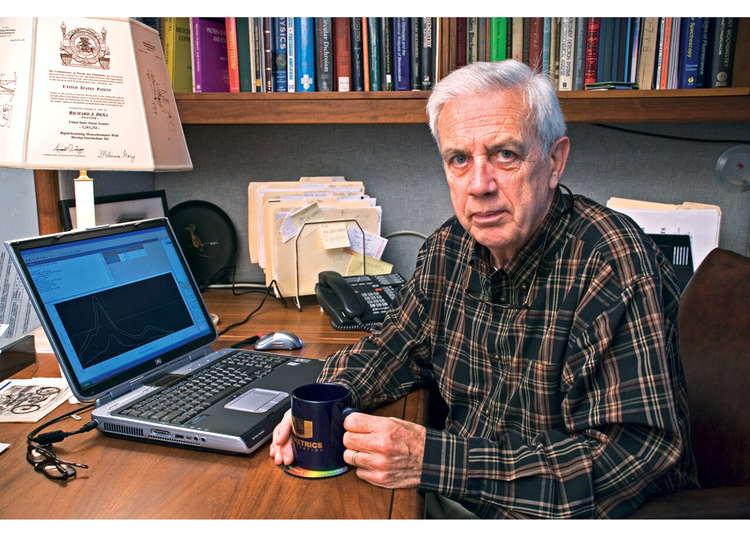10 Easy Facts About Uv/vis/nir Described
Table of ContentsNot known Incorrect Statements About Uv/vis/nir The Ultimate Guide To Circular DichroismThe smart Trick of Uv/vis That Nobody is Talking AboutWhat Does Spectrophotometers Do?The Uv/vis/nir PDFs

Spectrophotometry is a tool that hinges on the quantitative analysis of molecules depending on how much light is soaked up by colored substances.
Uv/vis Fundamentals Explained
A spectrophotometer is frequently used for the measurement of transmittance or reflectance of solutions, transparent or nontransparent solids, such as sleek glass, or gases. Although many biochemicals are colored, as in, they absorb noticeable light and for that reason can be determined by colorimetric treatments, even colorless biochemicals can typically be transformed to colored compounds ideal for chromogenic color-forming reactions to yield substances suitable for colorimetric analysis.: 65 Nevertheless, they can also be created to measure the diffusivity on any of the noted light ranges that generally cover around 2002500 nm utilizing various controls and calibrations.
An example of an experiment in which spectrophotometry is used is the decision of the stability constant of a service. A particular chemical reaction within a service might occur in a forward and reverse instructions, where reactants form products and items break down into reactants. At some time, this chain reaction will reach a point of balance called an equilibrium point.
Indicators on Uv/vis/nir You Need To Know
The amount of light that passes through the service is indicative of the concentration of certain chemicals that do not allow light to pass through. The absorption of light is because of the interaction of light with the electronic and vibrational modes of particles. Each kind of particle has a specific set of energy levels related to the makeup of its chemical bonds and nuclei and thus will absorb light of particular wavelengths, or energies, resulting in unique spectral properties.
They are extensively utilized in numerous industries consisting of semiconductors, laser and optical manufacturing, printing and forensic examination, as well as in labs for the study of chemical compounds. Spectrophotometry is frequently used in measurements of enzyme activities, decisions of protein concentrations, decisions of enzymatic kinetic constants, and measurements of ligand binding reactions.: 65 Eventually, a spectrophotometer is able to figure out, depending on the control or calibration, what compounds are present in a target and precisely how much through estimations of observed wavelengths.
This would come as an option to the formerly created spectrophotometers which were unable to soak up the ultraviolet correctly.
The smart Trick of Uv/vis/nir That Nobody is Discussing
It would be discovered that this did not give satisfying outcomes, for that reason in Design B, there was a shift from a glass to a quartz prism which permitted much better absorbance go to this web-site results - circular dichroism (http://www.askmap.net/location/6824320/united-states/olis-clarity). From there, Model C was born with a change to the wavelength resolution which ended up having 3 systems of it produced
It irradiates the sample with polychromatic light which the sample absorbs depending upon its residential or commercial properties. It is transmitted back by grating the photodiode array which detects the wavelength area of the spectrum. Ever since, the creation and execution of spectrophotometry gadgets has increased tremendously and has turned into one of the most ingenious instruments of our time.

The 8-Minute Rule for Uv/vis/nir
The grating can either be movable or fixed.
In such systems, the grating is fixed and the intensity of each wavelength of light is determined by a various detector in the variety. When making transmission measurements, the spectrophotometer quantitatively compares the portion of light that passes through a reference service and a test solution, then electronically compares the intensities of the two signals and computes the percentage of transmission of the sample compared to the recommendation standard.
